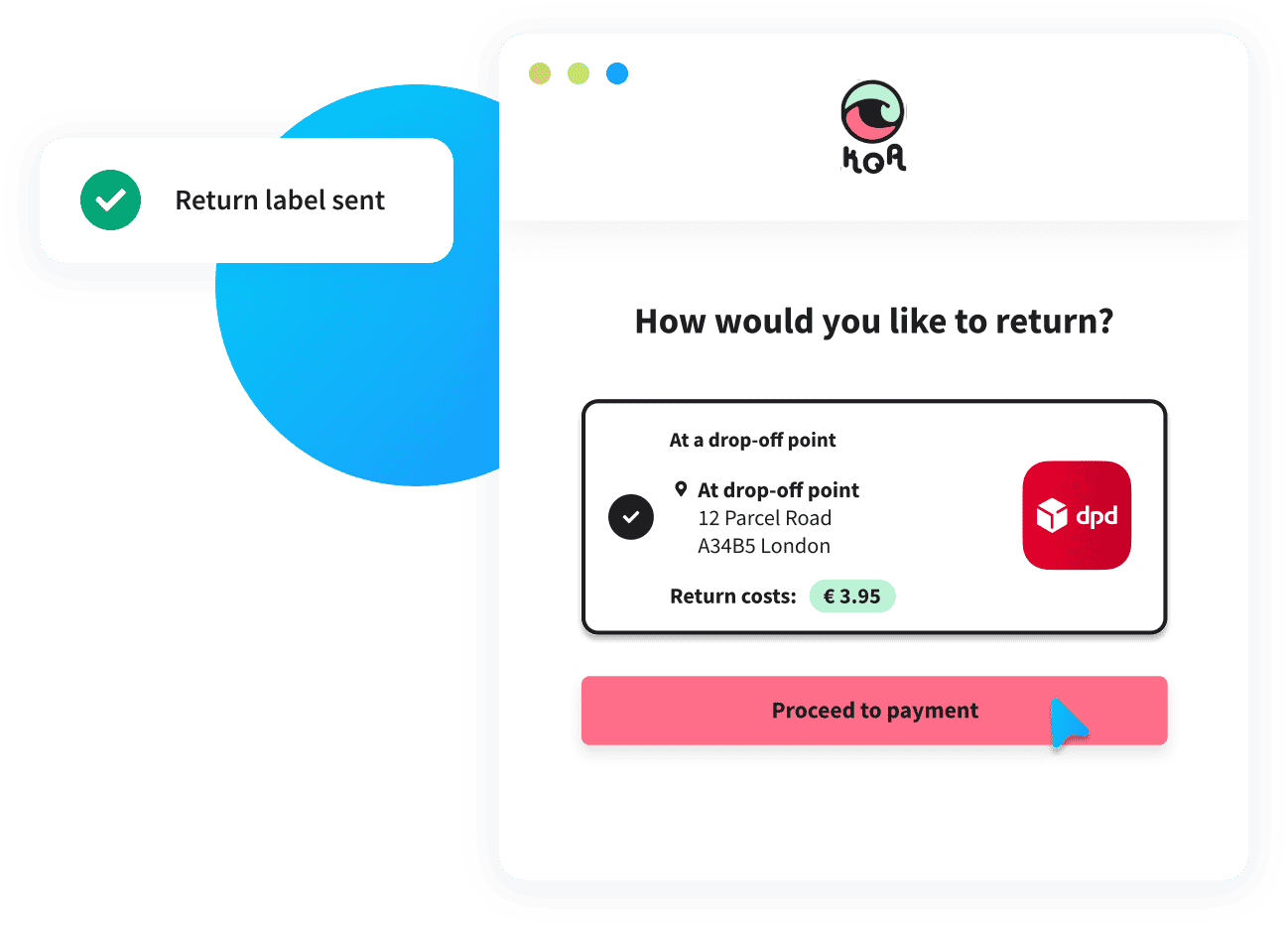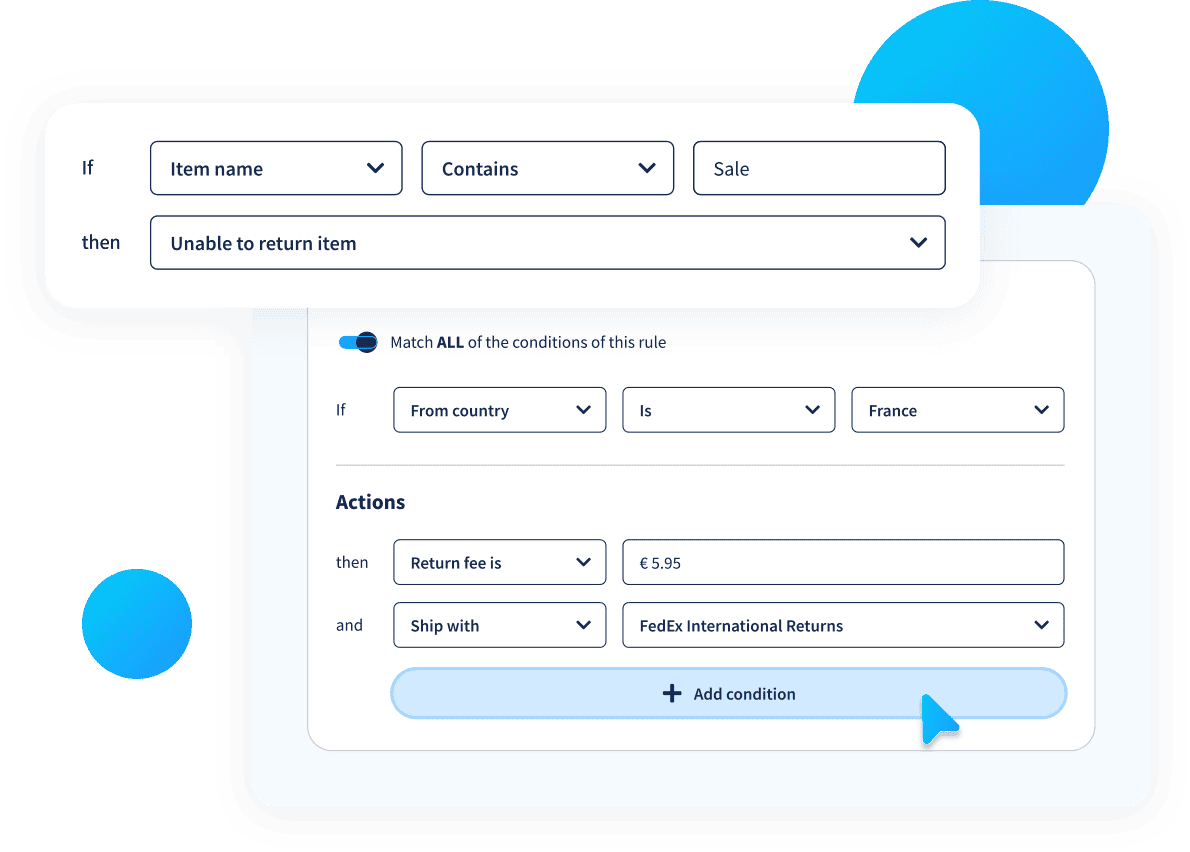Forget about the complexities of an RMA with our returns solution
Combine the power of an RMA software with a leading shipping platform. Get access to over 100 carriers, multiple return methods, and automated return tracking. Ready to simplify your returns?
“Whether it’s printing labels, adding new carriers or managing returns, Sendcloud makes our lives easier.”
Immersive Display
No extra tools needed
Forget juggling multiple tools. Handle your returns and shipping all in one place, reducing costs and streamlining your workflow.
600+ return methods
Enjoy instant access to over 600 return methods and carriers. Use our pre-negotiated rates or your own contracts—whatever works best for you.

Automated return workflows
Say goodbye to complex RMA processes. Automate your return workflows and label printing, saving time and reducing errors.
Let customers handle their own returns
With the return portal, customers can initiate and manage their returns, saving you time and reducing workload, without the hassle of manual RMA processing.


Put your returns on autopilot without an RMA software
Forget about manual approvals and complicated return policies. Sendcloud allows you to create automated rules that approve or reject returns, assign fees, and manage the entire process.
Reduce “Where Is My Order?” inquiries
Gain complete control over the return process from start to finish. You and your customers can easily track the return status and monitor every step without needing to contact your team.
Offer hassle-free international returns
Set up a multilingual returns portal that helps international customers create return labels and select the most convenient return options in their area.
Get your return portal up and running
Check out our quick demo video where we show you exactly how easy it is to manage returns with our return portal. Grab some popcorn and hit play!
What our customers say

“Our customers can register their returns themselves via the return portal. This leads to higher customer satisfaction and our employees can now address more important issues.”
Bunzlau Castle 🇳🇱

“Thanks to Sendcloud, we have all the information about the customer’s order on one platform. We can quickly manage returns and any refunds.”
PittaRosso 🇮🇹

“The Sendcloud return portal is a great help to us and makes our customer service very professional. It’s a big time saver for us and the customer.”
DreaminzZz 🇫🇷

“The Sendcloud return portal is a great help to us and makes our customer service very professional. It’s a big time saver for us and the customer.”
Black Racks 🇪🇸

“The generation of customs documents has enabled us to offer our international customers delivery options thanks to multi-carrier support. This allows us to expand rapidly into new markets.”
Jade Roller 🇫🇷
Your go-to guides for
mastering returns
Don’t face the complexities of returns alone. We’re here to guide you every step of the way.

Top 3 effective return strategies
Learn everything you need to know about how to set up a streamlined, customer-friendly e-commerce returns management strategy.

How to write a powerful return policy
A powerful return policy can be your e-commerce store’s missing ingredient to making more money. Learn how to write yours with our step-by-step guide.

7 tips for online shops to reduce return costs
Is your business losing revenue as it’s hit with more and more return costs? Find out our seven tips for reducing the cost of e-commerce returns.

Returns and customer impact
The customer journey doesn’t end at checkout; post-purchase, especially returns, can make or break relationships.
FAQ
What does RMA stand for?
RMA stands for Return Merchandise Authorization. It’s a process businesses use to approve and track product returns. When customers need to return an item, they request an RMA, which gives them the green light to send it back.
Want to know more? Check out our article about RMA meaning.
What is RMA software?
RMA software is a tool that helps businesses manage product returns. It tracks every step—from the customer’s request to the final resolution—making the whole returns process smoother and more organized. If you frequently manage returns, this type of software can save a lot of time and headaches.
If your current RMA system feels cumbersome, check out the Sendcloud App Store and find the perfect fit for your business needs.
How does an RMA work?
An RMA process starts when a customer requests to return a product. They get an RMA number, which is like an approval code. Once the product is sent back, the business inspects it and decides whether to issue a refund, send a replacement, or repair the item. It’s a systematic way to ensure returns are handled efficiently.
What are the three types of RMA?
There are generally three ways an RMA can be handled:
- Refund: The customer returns the product and gets their money back.
- Replacement: The item is returned, and the customer receives a new one in exchange.
- Repair: The product is sent back, fixed, and then returned to the customer.
These options help businesses address different customer needs and situations.
What is RMA in the ERP system?
RMA in an ERP (Enterprise Resource Planning) system refers to the integration of the returns process into a company’s broader business operations. It connects returns with inventory, accounting, and customer service, ensuring that all parts of the business are in sync when handling returns.
Who pays for shipping in RMA?
Who covers the shipping costs in an RMA process depends on the company’s return policy. Sometimes, the business covers the cost, especially if the product is defective. Other times, the customer might need to pay for return shipping. It’s essential to have clear policies, so there are no surprises.
To ensure your policy is clear and fair, you can use Sendcloud’s return policy tool to create and manage your return policies easily.
What is the Return Merchandise Authorization on Amazon?
On Amazon, an RMA (Return Merchandise Authorization) is the process that allows customers to return items they’re not satisfied with. Customers request an RMA, receive a return label, and follow the steps provided by Amazon to send the item back. It’s Amazon’s way of ensuring returns are handled systematically and efficiently.
Cut RMA costs—simplify returns with Sendcloud
Discover how our return portal can make your returns process faster, easier, and more efficient.







